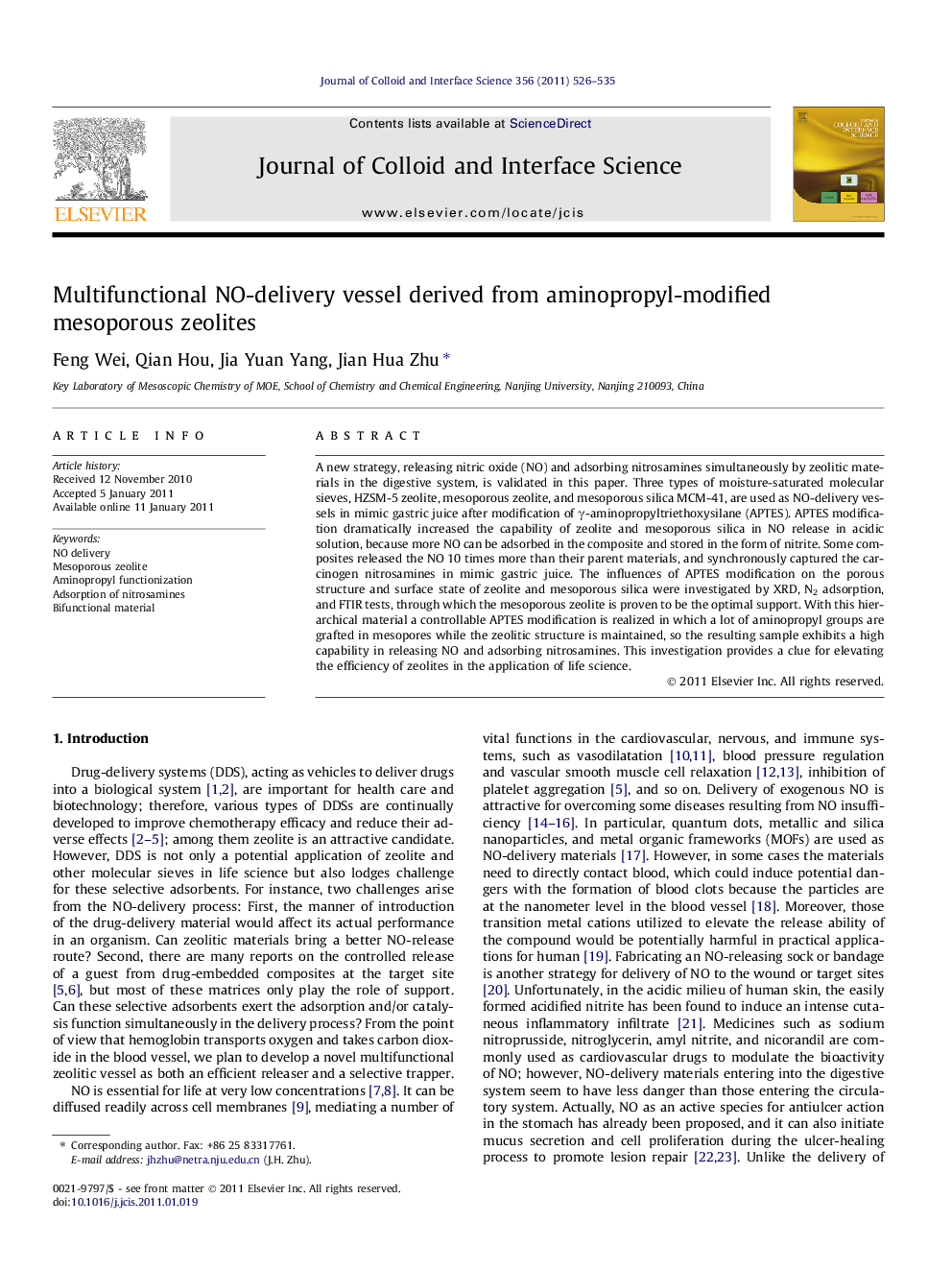| Article ID | Journal | Published Year | Pages | File Type |
|---|---|---|---|---|
| 608803 | Journal of Colloid and Interface Science | 2011 | 10 Pages |
A new strategy, releasing nitric oxide (NO) and adsorbing nitrosamines simultaneously by zeolitic materials in the digestive system, is validated in this paper. Three types of moisture-saturated molecular sieves, HZSM-5 zeolite, mesoporous zeolite, and mesoporous silica MCM-41, are used as NO-delivery vessels in mimic gastric juice after modification of γ-aminopropyltriethoxysilane (APTES). APTES modification dramatically increased the capability of zeolite and mesoporous silica in NO release in acidic solution, because more NO can be adsorbed in the composite and stored in the form of nitrite. Some composites released the NO 10 times more than their parent materials, and synchronously captured the carcinogen nitrosamines in mimic gastric juice. The influences of APTES modification on the porous structure and surface state of zeolite and mesoporous silica were investigated by XRD, N2 adsorption, and FTIR tests, through which the mesoporous zeolite is proven to be the optimal support. With this hierarchical material a controllable APTES modification is realized in which a lot of aminopropyl groups are grafted in mesopores while the zeolitic structure is maintained, so the resulting sample exhibits a high capability in releasing NO and adsorbing nitrosamines. This investigation provides a clue for elevating the efficiency of zeolites in the application of life science.
Graphical abstractAminopropyl-functionalized mesoporous zeolite adopts a “preadsorption–release–resorption” manner for delivery of NO and capturing of NPYR in a one-step process, which affords a potential multifunctional biochemical vessel for life science.Figure optionsDownload full-size imageDownload high-quality image (42 K)Download as PowerPoint slideResearch highlights► Both NO release and nitrosamine adsorption are performed simultaneously in mimic gastric juice. ► NO release is acid triggered, so the activation of zeolites vessel is omitted. ► Aminopropyltriethoxysilane modification enables zeolite to release 10 times more NO. ► The zeolite vessel also efficiently traps nitrosamine in gastric juice after releasing NO.
